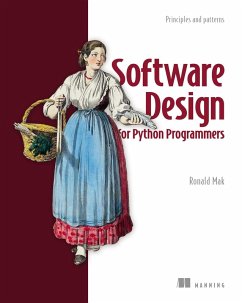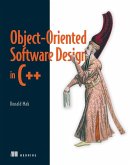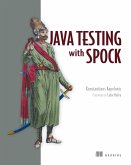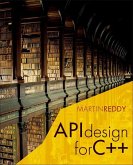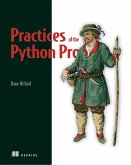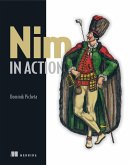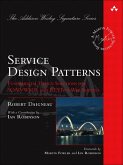Design principles and patterns for building better Python software. Great Python applications take advantage of established design principles and patterns that maximize performance, maintainability, and reliability. Software Design in Python shows you how to build on your Python coding skills by mastering the practices of great software design! Following intuitive "before" and "after" examples of improved code, you'll learn to plan and execute Python applications effectively and avoid bugs associated with unmanaged state, poorly-formed classes, inflexible functions, and more. In Software Design in Python, you'll learn how to: • Acquire and analyze application requirements • Create well-designed applications through iterative development • Design Python classes with high cohesion and loose coupling • Implement Python decorators to enhance class properties, abstraction, and method functionality • Apply industry-standard design principles to improve code structure and maintainability • Identify appropriate design patterns to solve complex software design challenges Software Design in Python teaches you to apply tried-and-tested object-oriented design principles to your Python code. The examples in this guide are simple, clear, and accessible. All examples are in Python, although most of the techniques will apply to any object-oriented language. You'll solve common architecture problems, and discover the "Pythonic" way to implement encapsulation, implementation-hiding, method overloading, and more. About the book Software Design in Python helps you build software like the pros. In clear, jargon-free language it lays out the object-oriented design principles, practices, and patterns that you need to know to build scalable and maintainable applications. Throughout, you'll find intuitive "before" and "after" examples that show you what bad code looks like, and how to fix it with the right pattern. Conversation sidebars feature engaging talking heads that ask-and-answer common questions. If you know the basics of Python code and are ready to make the leap to building software, this book will be the patient and insightful mentor you need! About the reader For programmers comfortable with Python syntax. No experience with object-oriented software design required. About the author Ronald Mak is a former NASA senior scientist. Currently, he teaches data science and computer science at San Jose State University. He is the author of Object-Oriented Software Design in C++.
Dieser Download kann aus rechtlichen Gründen nur mit Rechnungsadresse in A, B, BG, CY, CZ, D, DK, EW, E, FIN, F, GR, HR, H, I, LT, L, LR, M, NL, PL, P, R, S, SLO, SK ausgeliefert werden.

